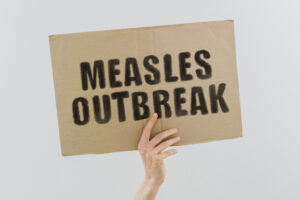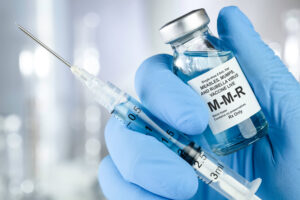We’ve been asking for FSMA guidance on environmental monitoring. And now we have it – in FDA’s draft guidance on “Control of Listeria monocytogenes in Ready-To-Eat Foods,” as overviewed in last week’s newsletter. But it’s likely not quite what you’ve been hoping to hear. While there are certainly some great recommendations and tools, there are also some that may, again, raise as many questions as are answered. Getting a Listeria monocytogenes positive result from a food contact surface of a ready-to-eat (RTE) food during a production run will create some major stress for a food company. Questions immediately come up: What do you do with the product? – which I hope you have on hold! If you don’t have it on hold, are you facing an inevitable recall? Yes, you probably are. If you have it on hold what should you do? Can you test your way to shipping the product? For all these reasons, we at TAG have been advising our clients not to test zone 1 unless you have to and for sure only when you have the product on hold. Now FDA is basically saying they expect you to test food contact surfaces during a production run. So, will you be dinged by FDA if you don’t do that? What should you do if you find a positive result? Will FDA let you off the hook if it is the first time you have a positive zone 1? Lots of questions but not a lot of clarity on answers from FDA in the new guidance document. To be specific, as discussed below in “When to collect samples,” FDA advises that samples be taken in the midst of a production run – at least three or four hours into it, which “allows time for L. monocytogenes (if present) to work its way out of harborage sites and contaminate the environment, the processing line (including FCS sites), and, potentially, RTE product.” While that’s a good point, it’s not such a good situation for all the product that was run prior to this sampling if a positive is found, or the product on that line after the sample was taken – as it implicates all product of this run, and potentially of a previous run if samples weren’t taken at the end of that run, or there were concerns about the cleaning. Clearly this new guidance around zone 1 testing is a challenge. But all that said, following are the key points of FDA’s guidance on environmental controls for Lm (all of which, FDA continually notes, needs to documented in written environmental monitoring procedures.). Determine Risk The guidance recommends that your environmental monitoring procedures use a risk-based approach based on the characteristics of your RTE food products and processing methods. In general, the greater the risk that an RTE food could become contaminated with Lm and support its growth, the greater the frequency of environmental sampling and testing, and the more stringent the corrective actions if Listeria spp is detected. To determine this, FDA provides a table with questions that should be included in your risk evaluation: Where to Collect Samples The guidance goes on to talk about where to collect samples and states that selection of sites to be sampled should be based on the potential for the site to be contaminated with Lm, with the number of sites determined by size of the plant, plant features, product flow, characteristics of the RTE food, the processing methods used to produce the food, and previous sampling results (if any). You will generally do more sampling in zones 1 and 2 because there is greater risk to the food in these zones. Examples of sites are included in the guidance (Appendix 1). Even in very small facilities, FDA says that sampling should be conducted in at least 5 FCS sites and 5 non-FCS sites on each RTE production line; larger processors should determine the number of sites based on the size of the plant. Because Lm is widespread and can persist in harborage areas of both food processing and packing areas, it is likely that you will, at least occasionally, detect Listeria spp or Lm. Thus, if test results are consistently negative, you should revise the environmental monitoring procedures to add and/or substitute other surfaces for sampling. When to collect samples FDA states that the most important time to collect environmental samples is toward the end of a production run, or at least several hours into it. This allows time for any Lm present to “work its way out of harborage sites” and contaminate the environment, processing line, and, potentially, RTE product. If samples are taken too soon after surface sanitation, it could cause an inaccurate test. I don’t question that looking for Lm in the middle of a production run is likely going to increase the chances of finding a positive. The tough point, as I noted above, is what to do when you do find a positive, especially on zone 1. How often to collect samples The guidance document talks about frequency of sampling and makes the following points – sampling frequency should be conducted based on risk: Foods that don’t support Lm growth: at least monthly. Foods that support Lm growth: at least weekly. If Listeria spp is found in the plant, sampling should be increased. All sites should be tested during the same period, with both FCS and non-FCS sites sampled. In the next newsletter, we will focus on what FDA recommends you do if you find a positive result on a food contact surface. To whet your appetite for the next newsletter ,the guidance may, at first glance, suggest it is alright to ship product when you have a first FCS positive result. But I am not so sure that FDA really means that. If you later have a second positive from that same site I think you could be looking at a recall related to the first positive result. But we will spend more time looking at this issue in the next newsletter. About The Acheson Group (TAG) Led by Dr. David Acheson, TAG is a food safety consulting group that provides guidance and expertise worldwide for companies throughout the food supply chain. With in-depth industry knowledge combined with real-world experience, TAG’s team of food safety experts help companies more effectively mitigate risk, improve operational efficiencies, and ensure regulatory and standards compliance. Learn more at: www.AchesonGroup.com





